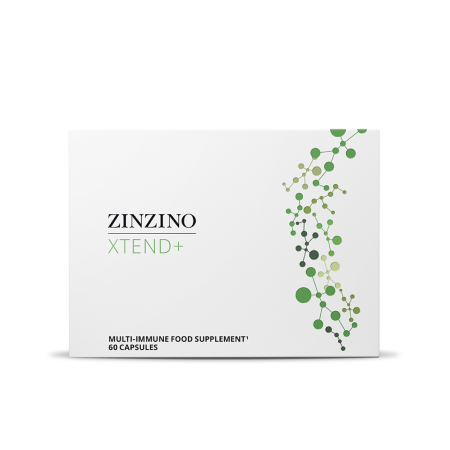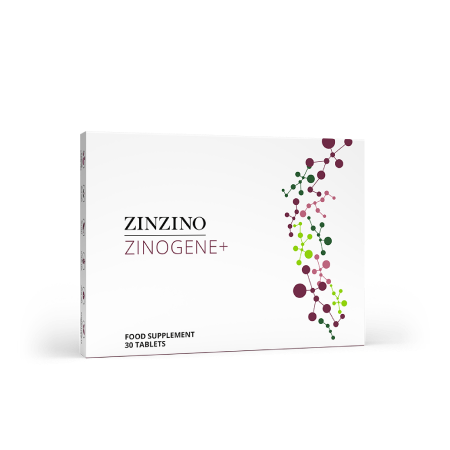Vitalija Marcinauskienė
Zinzino Customer
Welcome! I have had great experiences with my products, and I think you'll love them too. Let me know what you think!
What are phytonutrients and what do they do?

Macros and micros usually take center stage on the topic of nutrition, leaving another important aspect forgotten: phytonutrients. These chemical compounds exist naturally in plants and offer many health benefits when consumed by us, making them a key part of a good diet.
“phyto-” comes from a Greek word, meaning “related to plants”. Phytonutrients, as the name suggests, are nutrients found in them. Also called phytochemicals, there are over 25,000 different types known to us – and undoubtedly many, many more waiting to be discovered.
In plants, phytonutrients are the first line of defense against threats like insects, fungi and sunlight. They also affect properties such as taste, odor and color, turning tomatoes red and garlic into a bromidophobe’s (that would be a person with a strong aversion to smell) worst nightmare.
Botany trivia aside, what do phytonutrients do for our own species? A lot, actually. While they’re not essential to human survival like the holy trinity of macronutrients, vitamins or minerals, they too fill an important role in keeping us healthy.
What are the benefits of phytonutrients?
Every type of phytonutrient is unique and has its own set of health benefits, but a big chunk of their collective super power lies in the antioxidant and anti-inflammatory properties that help protect the cells in our bodies, boosting the immune system and promoting healthy aging. Consuming phytonutrients may reduce the risk of several chronic diseases while also preventing infection from bacteria and viruses.
Phytonutrients are a big part of why fruits and vegetables are considered so important for our health, but as science is still working to understand them better, the full extent of their effects on the human body is yet to be unraveled.
Foods with phytonutrients
Phytonutrients are found in fruits and vegetables, as well as other types of plant-based foods. Since phytonutrients are responsible for the pigmentation in (not-so-green) greens, they’re usually more common in colorful fruits and vegetables. Getting phytonutrients into your system is not only about what you eat, but also how you prepare it. While people favor different cooking methods, using less liquid and shortening cooking time usually helps in retaining phytonutrients. Opt for a variety where you alternate between steaming, stir-frying and blanching. These chemical compounds are divided into several different groups, with some of the most notable being:
Carotenoids
Pigments in plants responsible for their vibrant colors. They can be found in:
- Red and (to a lesser extent) yellow tomatoes
- Oranges
- Pumpkins
- Spinach
- Kale
- Yams
- Carrots
Ellagic acid
Golden raspberries are particularly rich in ellagic acid. Other sources include:
- Blackberries
- Cloudberries
- Pomegranate
- Strawberries
- Grapes
- Walnuts
- Pecans
Glucosinolates
These sulfur-containing compounds are found in cruciferous vegetables, where they are responsible for the strong aroma and bitter flavor. Common sources include:
- Broccoli
- Brussels sprouts
- Cauliflower
- Cabbage
- Bok choy
- Mustard
Flavonoids
Sporting over 5,000 different types, these flower pigments constitute one of the biggest groups of phytonutrients. Foods rich in flavonoids include:
- Parsley
- Apples
- Coffee
- Onions
- Green and black tea
- Citrus fruits
- Soy beans
Resveratrol
Found in the skin of grapes and wine. Some speculate that the wine-loving Frenchmen owe their impressive health statistics to these phytonutrients. Resveratrol can also be found in:
- Peanuts (and peanut butter)
- Strawberries
- Pistachios
- Blueberries
- Dark chocolate
Phytoestrogens
Good sources of phytoestrogens include:
- Soy
- Oranges
- Broccoli
- Legumes
- Flax seeds
- Coffee
Phytonutrients in supplements
There are many supplements out there that can help increase your intake of phytonutrients, from capsules and tablets to powders and liquids. These may be a good option for those who struggle to get enough through their diet or experience side effects such as bloating, abdominal pain or gasses when doing so.
As science on phytonutrients is still rather limited compared to that on other nutrients, these supplements are also not as well regulated, which leaves room for impure and inefficient products on the market. Furthermore, research suggests that phytonutrients may be better absorbed by our bodies when consumed in conjunction with other nutrients. This is why we have developed Xtend+ – a vegan, all-natural dietary supplement featuring a premium blend of micro- and phytonutrients that act synergistically to give you the full range of benefits of each and every component. The ingredients combined in Xtend+ offer many benefits. These affect our cells, organs and tissues in the body, promoting healthy bone and joint function, increased energy levels and a strong immune system.
Also packed with phytonutrients, ZinoGene+ is based on a complex formula of senolytic compounds, fucoidans (a natural polysaccharide from seaweed) polyphenols (phytonutrients with powerful antioxidant properties), vitamin C and zinc to support DNA synthesis and cell division, while protecting against oxidative stress. This helps promote a healthy aging process and a functioning immune system. ZinoGene+ contains only ingredients of the highest quality to ensure optimal bioavailability and functionality.



Share this page
Or copy link